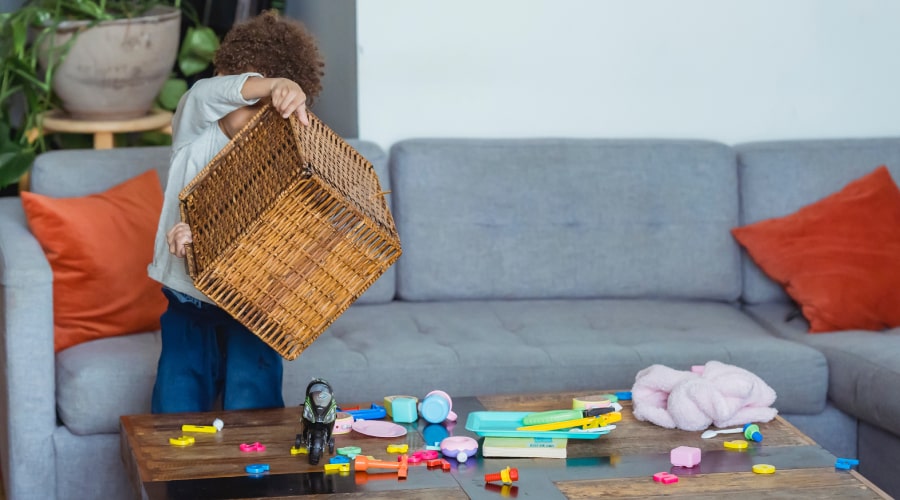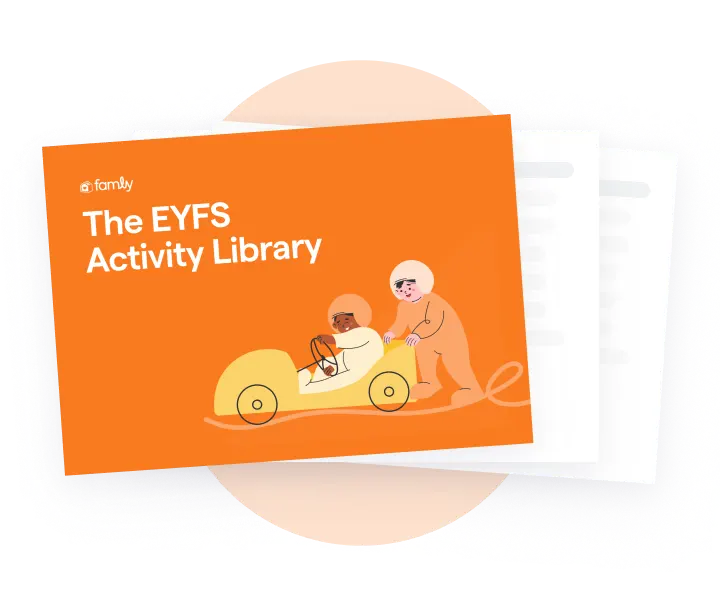settings
children
With Famly since
In a child’s world, small wooden blocks can be ancient treasures, and feathers magical wands. In the Early Years, we call them loose parts - they’re materials and items that can be used in as many ways as a child can imagine.
As amazing as they are, sometimes practitioners aren’t keen to embrace loose parts play as part of their daily routines.
It might be difficult to give children full control over their play and learning, as a lot of us have been conditioned to think that we need to hit targets and push children through development. This makes us over plan and over complicate our days in order to ‘tick off’ milestones and stages.
But we all know that the more a child engages, the more they’ll learn. And when is this learning at its height? When it is self-initiated. Loose parts play lets children thrive, as it pushes them to further their own learning.
I used to spend hours planning activities linking to different areas of learning, and including every single child’s interests. But now I fill my environment with loose parts, without a plan or a specific child in mind. The children use the objects in any way they please - they’re constantly following their own interests and delving into different areas of learning all by themselves.
In short: instead of creating the learning, I started looking for learning. I’m going to share exactly why loose parts and open-ended play give children the freedom to learn, with examples as to why.

Understanding the world with loose parts play
Giving children loose parts and a flexible environment lets children express themselves freely, as it creates space for all types of play and is accessible for everyone. This is so important, particularly because children are brand-new to the world.
Children learn stereotypes and bias from the adults around them, so giving them objects that aren’t ‘boys’ or ‘girls’ toys goes a long way. Unintentionally, practitioners often set up activities with a specific gender in mind - like a car station with a garage for boys or a fairytale corner for girls.
There’s absolutely nothing wrong with this if a lot of the boys in your setting enjoy cars, but let’s just be conscious that we might be putting them into a gender box already.
Loose parts offer so much in the way of learning, as they let children create their own resources without reinforcing any stereotypes or gender bias. The play is entirely up to them and how they interpret the objects.
Let’s take a look at role-play, for instance:
- You’ve got a home corner or role-play corner in your setting.
- But before the children start playing, you determine what’s ‘meaningful’ in a home. For example, you’ve got toy food, a toy kitchen set, a toy iron, and maybe a tea set laid out.
- In doing this, you already set the boundaries and parameters of the home by providing resources.
But if we start a deconstructed role-play corner with loose parts:
- Children can engage with what’s meaningful to them and what they think a home is.
- Their creativity blossoms, as they build their own representation of a home and engage with other children to create it.
- The learning is taken to a whole new level, as the open-ended resources let children decide what is meaningful, what they want to represent, what their imaginations can conjure up and what their own home life looks like.
How does loose parts play boost communication and language?
Just like adults, children won’t be interested in every topic and every conversation. By allowing them to lead their own learning, they’ll develop their listening skills in a much deeper way.
For instance, if a child is sitting quietly on the carpet while you talk about the weather, it doesn’t necessarily mean they’re actively listening to you. They may be being passive and simply sitting still.
Children really develop their listening and attention skills in ways that are relevant and meaningful to them, and interact with what interests them.
A few questions to ask yourself:
- Is your discussion about the weather meaningful to them in any way?
- Can they play it out and put it into context?
Loose parts are a great bridge for this. When a child actively wants to use and explore all the different resources you have provided them with - maybe you’re introducing day leaves to explain autumn - children are more likely to listen to rules and advice. Why? Because it has a direct benefit for them and their play.
Personal, social and emotional learning through play
One of the most important aspects of early years development is helping children become confident, resilient and open-minded individuals. And the great news is, all of this can be done with loose parts play!
Resilient learners
Something that I always noticed when my room had a ‘maths area’ or a ‘literacy area’ is that many children wouldn’t use these because they knew that I had a specific ‘outcome’ in mind, or a certain ‘way’ that they should play. This can cause some children to be terrified of failure, as they’re scared they won’t meet my expectations.
As my environment gradually filled with loose parts, this fear of failure disappeared. There’s no right or wrong way to use the resources offered, and, as a result, the children became confident to try new things and become more resilient learners.
Emotional learning
But not only that - these open-ended materials help develop the skills needed to manage feelings and behaviour, as they allow us to implement rules and boundaries in a really positive way.
Let’s take a look at safety for example - putting emphasis on rules and boundaries in relation to safety rather than in relation to behaviour has a positive impact on children. When you create rules around lifting planks of wood or moving cable reels, you can explain that this is to keep everyone safe. It’s a positive discussion that teaches children that sometimes rules are needed to keep everyone safe.
The big ideas

Loose parts play and physical development
For young children, physical development is about those early physical movements; reaching out, holding items, rolling, crawling and so on.
For the youngest, treasure baskets are a perfect loose parts play for those first movements as children explore what their bodies can do. And as children get older, loose parts can be a fantastic tool to encourage physical development.
By introducing large scrap materials, you’re encouraging skills in:
- Lifting
- Climbing
- Balancing
- Jumping
- Creativity (they may make planks on a ship, balance on tree stumps or make dens)
But this doesn’t just provide physical skills - it helps develop so many other areas too. If we take den-building as an example - it requires lots of communication, negotiation, sharing and turn taking, in addition to lots of mathematical thinking as children choose the correct shapes, lengths and materials for the job.
To top it all off - loose parts play is particularly great for developing risk awareness during physical play, as they realise that they need to be careful as not to accidentally hurt their peers when they’re playing with heavy objects, or if they’re learning to balance and might fall.
Loose parts play strengthens early maths skills
An environment filled with loose parts has many opportunities when we’re talking about numbers. Specially made maths resources can be expensive, and they’re not necessarily the best. Loose parts let children explore numbers using free or cheaply available natural and scrap materials.
As children further develop their mathematical skills they will begin to categorise items based on their size or shape. A lot of settings use plastic coloured bears for this, but I find that doesn’t leave a lot of room for exploration.
Natural loose parts are a perfect alternative as each leaf is completely different from the next. A leaf can come in an array of colours, shapes and sizes which makes them really interesting to compare with other leaves. If you ask the children to pick the biggest leaf from a pile, one may be bigger lengthways and one may be bigger width ways.
Again, loose parts let children see that there’s more than one right answer. This takes away that fear of failure I mentioned, and it gives a lot more opportunities to explore than plastic bears!
...and early literacy skills, too
There are lots of ways to incorporate loose parts into literacy. Firstly, there are books specifically about loose parts and loose parts play to enhance creativity and imagination which are a great resource when introducing loose parts for the first time.
But here are a few of my favourites:
- Use loose parts alongside books to tell stories in a way that lets children use their senses by adding different fabrics, natural and scrap materials which will bring stories to life. Why not give different fabrics to represent the textures of different animals in a story? Or create storytelling spaces in your outdoor environment so that children can experience a book about summer whilst being surrounded by it!
- If we’re thinking about writing and early mark making, loose parts play is fantastic. Think of finger painting and making marks in sand - it’s great practice for developing those all-important fine motor skills that will be needed when they begin to paint and draw and write.
Get 1000s of free EY activities
Want over 7,000 activities? See them in a free 14-day trial. Filter to target learning areas, age groups and topics, and get inspired.
Get started









